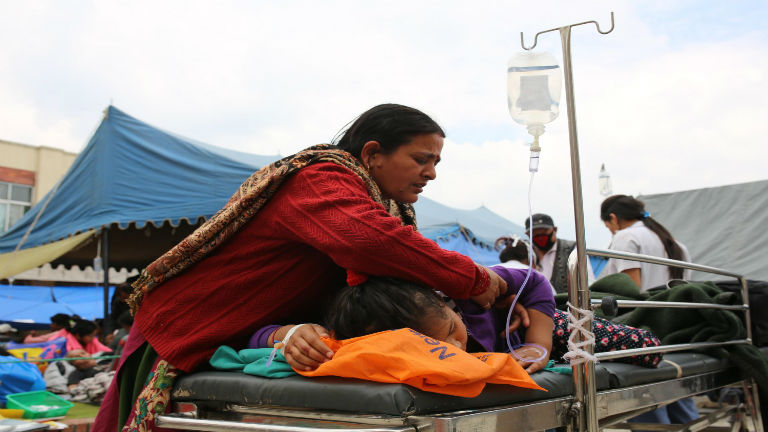The powerful earthquake that struck northwest of Kathmandu on Saturday has left more than 3,000 confirmed dead. An estimated 2.8 million children have been affected, including nearly 1 million who are in urgent need of humanitarian assistance. Efforts to help survivors are underway.
The earthquake has caused tremendous suffering; relief efforts intensify
- At least 940,000 children require immediate aid, and there are reports of dwindling water and food supplies.
- More than 3,000 people have been killed, and the number of reported casualties continues to increase.
- There has been massive destruction. Buildings have collapsed, cellphone networks are down in many areas, and power is out.
- Survivors have been terrorized by more than 60 aftershocks felt as far away as India and Bangladesh.
- 30 out of 75 districts have been affected by the earthquake, including rural areas and two densely populated cities—Kathmandu and Pokhara.
- The risk of waterborne disease is increasing because of limited access to safe water and sanitation.
- Hospitals are overcrowded and running out of medical supplies. UNICEF is receiving requests for essential drugs, medical and surgical equipment and emergency tents.
- The majority of the population is staying outside, despite the cold and rain, because of aftershocks and structural damage to buildings.
How UNICEF is responding
UNICEF and partners are planning to reach approximately 2,800,000 children in 35 affected districts, focusing on water and sanitation, protection, health and nutrition. The emergency response is underway:
- UNICEF cargo flights carrying 120 tons of humanitarian supplies are being prepared for airlift to the emergency.
- Pre-positioned supplies inside Nepal are being distributed.
- UNICEF has provided tents to be used at hospitals to assist the large number of injured people.
- UNICEF and its partners are providing water trucking services to all 16 camps across Kathmandu Valley.
- UNICEF has provided oral rehydration salts and zinc to prevent the outbreak of diarrheal disease.
- …Plus more to come in the hours and days ahead.
UNICEF has two offices in Kathmandu and has been working in Nepal since 1964 to save and improve the lives of the country’s most vulnerable children.
First-hand report from Kathmandu, Nepal
Rupa Joshi, UNICEF Communication Officer in Nepal, witnessed the earthquake:
“The shake was like nothing I have experienced … it shook for a long time … Many people fear Kathmandu will have a high death rate.
I saw many people preparing to camp out in the main open parade ground in the middle of the street. Relatives were crying in the main government hospital where the dead were being lined up in front of the hospital building. People fear that other buildings will collapse.
My family is traumatized. We are five generations living under one roof — from a 100-year-old grandmother to my 16-month-old granddaughter. Strong aftershocks are keeping most of us up.”
Keep up-to-date on relief efforts and spread the word
- Find us on Twitter: @UnicefIreland
- Join us on Facebook: UNICEFIreland


